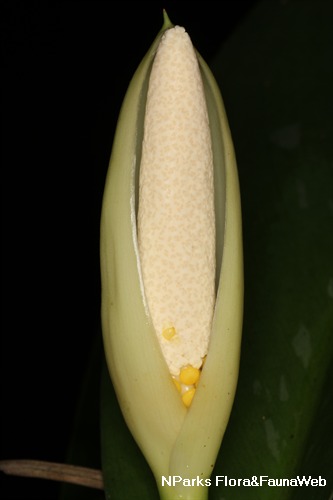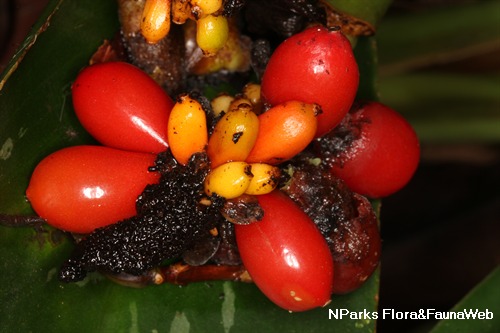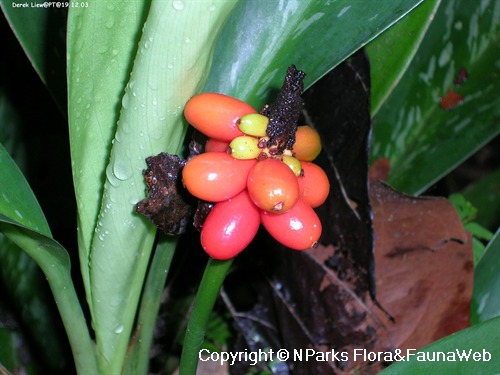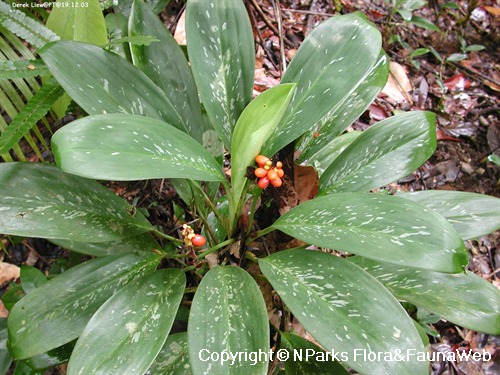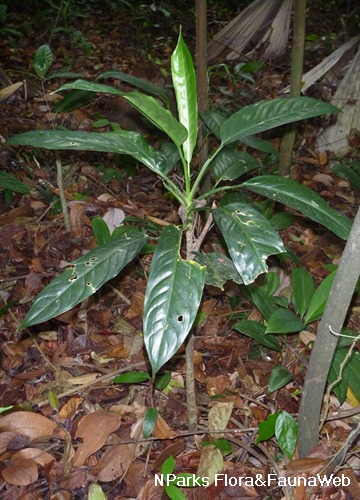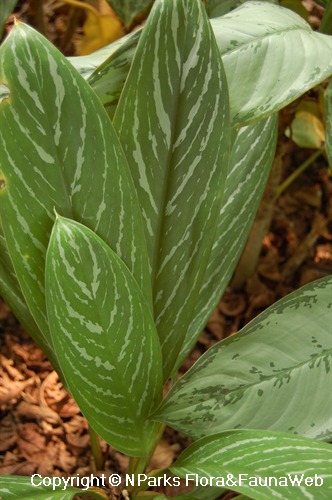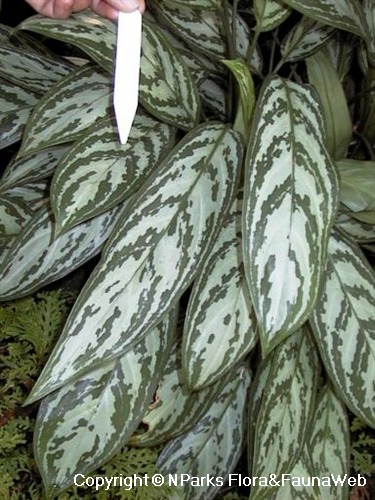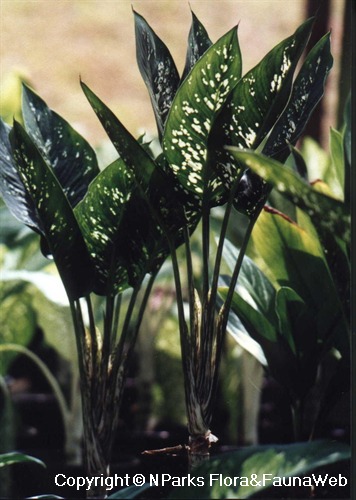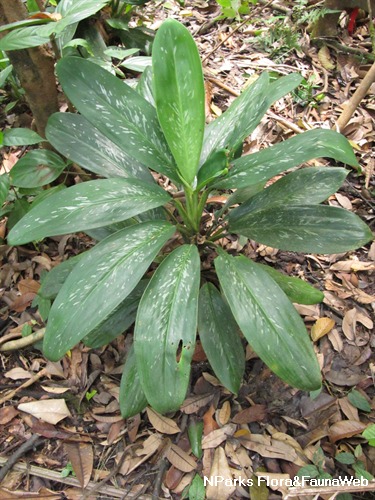
Back
Aglaonema nitidum (Jack) Kunth
| Family Name: | Araceae |
| Synonyms: | Aglaonema oblongifolium, Calla nitida Jack |
| Common Name: | Burmese Evergreen, Oblong-Leaved Aglaonema, Daun Lidah |
Name
Classifications and Characteristics
| Plant Division | Angiosperms (Flowering Seed Plants) (Monocotyledon) |
|---|---|
| Plant Growth Form | Herbaceous Plant |
| Lifespan (in Singapore) | Perennial |
| Mode of Nutrition | Autotrophic |
| Plant Shape | Shrubby, Irregular |
| Maximum Height | 0.6 m to 1 m |
Biogeography
| Native Distribution | Myanmar, Vietnam, Thailand, Sumatra, Peninsular Malaysia, Singapore, Borneo and Java. |
|---|---|
| Native Habitat | Terrestrial (Primary Rainforest, Freshwater Swamp Forest) |
| Preferred Climate Zone | Tropical, Sub-Tropical / Monsoonal |
| Local Conservation Status | Native to Singapore (Vulnerable (VU)) |
Description and Ethnobotany
| Growth Form | It is a small herb up to 1 m tall. |
|---|---|
| Foliage | Its alternate, stalked leaves have leathery leaf blades that are linear-oblong, dark green with white splashes, and 18-43 by 7.5-14 cm. |
| Flowers | Its flowers are attached to an erect shoot and enclosed by an oblong modified leaf (spathe) that is white or light green, and 5-7.5 cm long. |
| Fruit | Its 2 cm long fruits are red in colour. |
| Habitat | It grows in wet and dense lowland forests, often on limestone. |
| Associated Fauna | Its flowers are pollinated by flies and fruits are eaten by birds. |
| Cultivation | It can be propagated by seed or stem cutting. |
Landscaping Features
| Landscaping | It is suitable for parks and gardens, in moist and shaded areas, or around water bodies but under shade. |
|---|---|
| Desirable Plant Features | Ornamental Foliage, Ornamental Fruits |
| Landscape Uses | Interiorscape/ Indoor Plant, General, Parks & Gardens, Small Gardens, Riverine, Pond / Lake / River, Marsh / Bog |
Fauna, Pollination and Dispersal
| Fauna Pollination Dispersal Associated Fauna | Bird-Attracting |
|---|---|
| Pollination Method(s) | Biotic (Fauna) |
| Seed or Spore Dispersal | Biotic (Fauna) |
Plant Care and Propagation
| Light Preference | Semi-Shade, Full Shade |
|---|---|
| Water Preference | Moderate Water, Occasional Misting, Lots of Water |
| Plant Growth Rate | Moderate |
| Rootzone Tolerance | Moist Soils, Waterlogged Soils (Drains Site, Does not Drain Site) |
| Propagation Method | Seed, Stem Cutting |
Foliar
| Foliage Retention | Evergreen |
|---|---|
| Mature Foliage Colour(s) | Green, Silver / Grey |
| Mature Foliage Texture(s) | Smooth, Thick |
| Foliar Type | Simple / Unifoliate |
| Foliar Arrangement Along Stem | Alternate |
| Foliar Attachment to Stem | Petiolate |
| Foliar Shape(s) | Non-Palm Foliage (Oblong) |
| Foliar Venation | Parallel |
| Foliar Margin | Entire |
| Leaf Area Index (LAI) for Green Plot Ratio | 3.5 (Shrub & Groundcover - Monocot) |
Non - Foliar and Storage
| Stem Type & Modification | Herbaceous |
|---|---|
| Root Type | Underground (Fibrous Root) |
| Specialised Storage Organ(s) | Underground (Rhizome) |
Floral (Angiosperm)
| Flower & Plant Sexuality | Unisexual Flowers |
| Flower Colour(s) | Cream / Off-White |
|---|---|
| Flower Grouping | Cluster / Inflorescence |
| Flower Location | Axillary |
| Inflorescence Type | Spathe & Spadix |
Fruit, Seed and Spore
| Mature Fruit Colour(s) | Red |
|---|---|
| Fruit Classification | Simple Fruit |
| Fruit Type | Fleshy Fruit , Non-Accessory Fruit |
Image Repository
Others
| Master ID | 326 |
|---|---|
| Species ID | 1622 |
| Flora Disclaimer | The information in this website has been compiled from reliable sources, such as reference works on medicinal plants. It is not a substitute for medical advice or treatment and NParks does not purport to provide any medical advice. Readers should always consult his/her physician before using or consuming a plant for medicinal purposes. |


